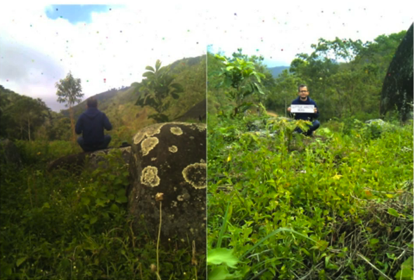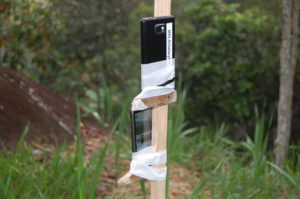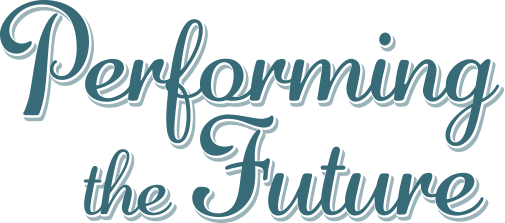By participating artist Matt Watkins
I have recently completed a workshop with two old friends and fellow artists looking at how we respond to the future of climate and how we measure change as artists. Rachel has already outlined the key events of the day in her post, so rather than summarise the whole day I am putting together my personal account of the day and some of the thoughts it has awakened for me in terms of exploring artistic practice in this area.
A key obsession I have had for some time is how to create an artistic response to climate change that is neither apolcalyptic or preachy in it’s message and visual language but at the same time not appearing trite or too reductive in the meaning conveyed. How to become emblematic of the change needed without the art becoming overly didactic or cliched, images of polar bears, industrial chimneys and tree felling are not useful.
One aspect of finding a visual language has been in exploring time and change, attempting to represent climate change in a way where it has agency in the here and how. We can’t see or hear climate change in the time it takes to look at or experience an artwork. The time periods are long and the outcomes are not explicit or obvious. So to make that time and change visible requires a new language in order to see it, to manifest it’s danger in a way that is both abstract and real at the same time.
I visited Brazil in 2012 as part of a joint artistic and scientific project called Timestreams to explore creative ways to use data in art projects related ot the climate and I wrestled with this issue there in the middle of the Mata Atlantica (the forest on the seaboard of Brazil) and tried a number of experiments to make change tangible.

Watching Me, Watching You 2012

In the above experiment I sat for an hour in the middle of the forest just seeing if I could observe change. I had two cameras one watchimg me from the front and one watching me from behind. I then observed on a whiteboard anything that appeared to change in that hour. The observations are often absurd or mundane, but it served the purpose of showing how difficult it is to see change. I also added to the image a series of random floating particles in the sky as if hinting at some hidden element in the envrionment. I also liked the sense that the positioning of the cameras gave, that of being observed or watched by the forest as much as I am watching and observing it.
I brought some of this sensibility to the workshop in Nottingham. How to observe the invisible? Either unviewable because of it’s hidden properties of invisible because of the short time frame.
I have always been fascinated by the power of coloured smoke to create drama and tension in an environment. Apocalypse Now uses coloured smoke in a very dramatic way to highlight the impact of humans in the natural world. The smoke serving to hide and reveal dark unnatural forces at work in the jungle.


I am interested in exploring how smoke can be used in a forest setting to highlight time and the presence of unknown forces.
During the day we got some smoke pellets and experimented with putting them in the greenery around the studio to see how it looks.
This particular video seems to to do all the things I am interested in. Creating a strange source of something alien, something with it’s own form that is apart from the natural surroundings it it in. I also like the way it can overpower the scene and hide the setting almost completely for a moment.
I would like to explore creating a video using a 360 degree camera, that could possibly be viewed through a VR headset to immerse a viewer in a landscape where smoke is released at different times and at different points in the scene to create a dramatic tension. As a VR film or interactive piece.
Clay Pits
Another theme that has interested me is a personal project about the changes of the Cornish landscape and one area in particular the Clay pits of central Cornwall. These are huge white slag heaps and deep water filled pits and craters that dominate the landscape in the centre of the county. During the day they are a white scar cutting through the green rolling fields and at night the conical slag heaps look almost like mystical pyramids in silhouette.

I became interested in looking at them from google maps satellite imagery where they take on a surreal nature. The pools becoming aquamarine or opal jewels in a lattice work of white lines.
I’m not sure what work they inspire but they are an indicator or climate change through a post industrial landscape not yet healed, still raw and full of secrets. The iridescent colour of it’s pool’s hiding heavy metals and chemicals churned up from the deep earth. In fact some people think it maybe a new source of lithium for making phone batteries. Beauty and toxicity combined.
During the workshop I drew a sketch of the view from above, to highlight it’s jewel like qualities:
Sacred Plastic
Plastic is everywhere we are all receiving it and then throwing it away in our weekly rubbish. We tend to regard plastic as a discard-able unlovely thing. Yet it is a wonder material and part of our problem with it is it’s ubiquity. We don’t see it as a special material.
Something that I have become interested in is how to convert the cheap disposable plastic that our food and other products come wrapped in, into something valuable or sacred. What is a sacred object? What makes one thing sacred and another thing not. Obviously scarcity accounts for the value of gold and diamonds, but it doesn’t necessarily make it sacred. The sacred nature often refers to how it represents religious signs and symbols, how it carries sentimental value like the urn of a loved ones ashes. How it links to a celebrity – a shirt worn by David Bowie. How to make the mundane sacred I ask myself.
Can I recast plastic in a form that will inspire reverence rather than the kind of indifference that allows it to slip into the sea or float in the wind to break up into millions of tiny particles that we are only now starting to notice as it appears in our drinking water and the guts of fish.
I’m interested to see what I can do to create an artwork that explores this material and the re-configures it into a form that can be deserving of our respect.

